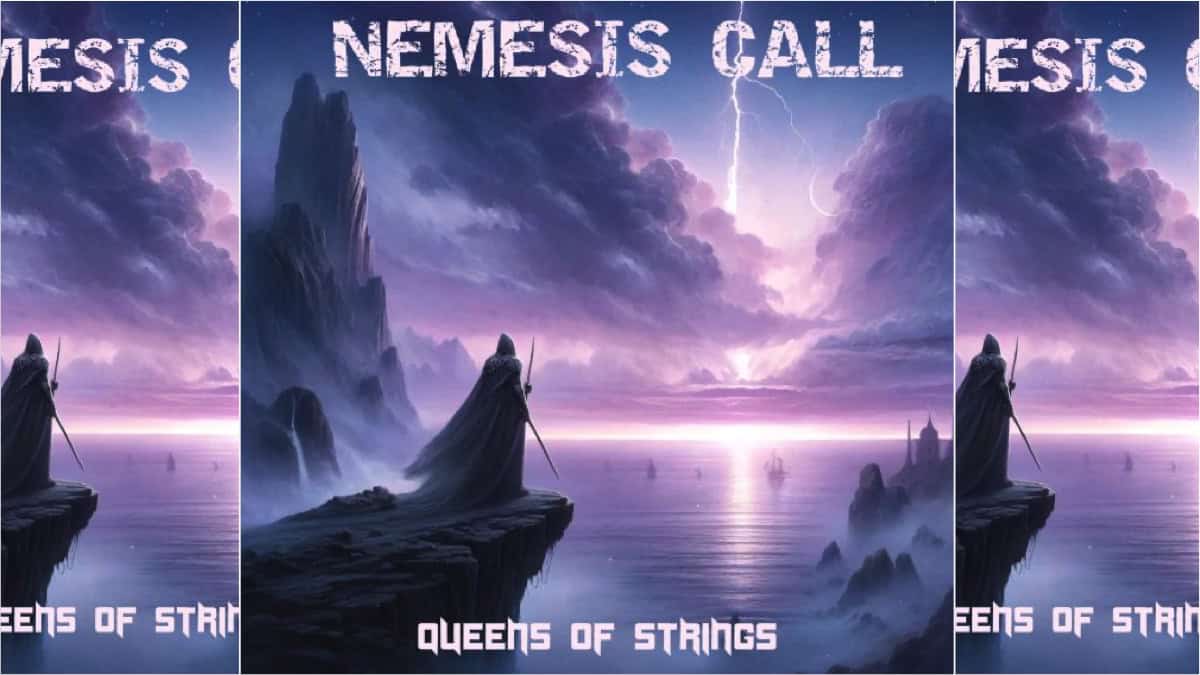Latest
The Devil Ain’t in the Details by Steve Gregory

Have you ever heard a song that you know well, performed in a way that made you feel like something was lacking? I am sure that most of us have heard a cover band play a song that we recognize, yet it feels as if something is not quite right. In these situations, the bassist may be playing “correctly”, but the performance leaves us feeling flat. This same problem exists in worship and plagues worship bassists. In these situations, the congregation hears a song that they have learned from an album or radio, yet something is off. Even when the band and the bassist appear to be “into it”, there is something that drains the worship experience. What is this terrible malady? Lack-of-attention-to-details-itis!
If a worship bassist rushes through a song, without paying attention to details, the congregation will absolutely notice. Worse yet, people will not experience deep, meaningful worship; rather, they will be distracted by the unsettled feeling we have described. The role of the worship bassist is to support worship and by not focusing to details our playing can divert attention from, not enhance, worship.
To illustrate what I mean by “paying attention to details” let’s look at the song, “Our God” by Chris Tomlin, which is found on the album “Passion: Awakening”. This song is not difficult (at least on the surface) and is exactly the type of song that bassists view as “simple” and often play without really digging into the details. First, the basic transcription:

 A pretty simple song, right? The bass line is not overly challenging and never becomes more difficult rhythmically than basic eighth note figures. As far as notes go, the A# on the fourth measure of the chorus creates a nice tension that releases in the second half, while the D# in the third measure of Instrumental 2 is important. Looking at the rhythms, we can see the rhythmic intensity increase steadily throughout the song. The most noticeable whole band rhythm occurs in the Instrumental 2 sections, where the pattern starts on the second eighth note, instead of the “1”.
A pretty simple song, right? The bass line is not overly challenging and never becomes more difficult rhythmically than basic eighth note figures. As far as notes go, the A# on the fourth measure of the chorus creates a nice tension that releases in the second half, while the D# in the third measure of Instrumental 2 is important. Looking at the rhythms, we can see the rhythmic intensity increase steadily throughout the song. The most noticeable whole band rhythm occurs in the Instrumental 2 sections, where the pattern starts on the second eighth note, instead of the “1”.
Playing this bass line as it is reflected on the page creates a performance that is correct, but lacking in depth. What details can we discover that adds to the music and deepens the performance? Let’s look at the next markup of the transcription.
 If you pay attention to kick drum patterns, not only will you make your drummer happy, you will also be adding a detail to the music that creates real depth. In this markup, the kick drum is noted with a carat (^) underneath the bass line. The synchronicity between the bass line and the kick drum is obvious. Use this detail to your advantage: pretend that the beater of the kick drum makes two sounds happen: the drum and your bass note. My drummer and I have played this song and had a lot of fun with this, especially the small details such as the pattern found in the second chorus. The note on the “and” of 3 creates incredible, yet gentle propulsion to build into the first instrumental. The seemingly simple idea – analyzing the music to see where the kick drum and bass line match so that a rhythmic unity is created – makes a huge difference. The bass line becomes “connected” and the groove deepens. Does anyone in the congregation really know that you are placing special effort into understanding the bass-kick drum relationship? No – but they will feel the difference!
If you pay attention to kick drum patterns, not only will you make your drummer happy, you will also be adding a detail to the music that creates real depth. In this markup, the kick drum is noted with a carat (^) underneath the bass line. The synchronicity between the bass line and the kick drum is obvious. Use this detail to your advantage: pretend that the beater of the kick drum makes two sounds happen: the drum and your bass note. My drummer and I have played this song and had a lot of fun with this, especially the small details such as the pattern found in the second chorus. The note on the “and” of 3 creates incredible, yet gentle propulsion to build into the first instrumental. The seemingly simple idea – analyzing the music to see where the kick drum and bass line match so that a rhythmic unity is created – makes a huge difference. The bass line becomes “connected” and the groove deepens. Does anyone in the congregation really know that you are placing special effort into understanding the bass-kick drum relationship? No – but they will feel the difference!
Now that we’ve added a level of detail, let’s add another layer.
 Dynamics are, in my opinion, one of the most often overlooked musical elements in worship music today. Many times there are only two dynamic levels: Loud and Soft. These levels are then stereotypically applied to create the thought that Loud = Happy/Intense and Soft = Thoughtful/Contemplative. The “two option” dynamics system strikes me as both lazy and insulting to the listener. Further, I am positive that the use of dynamics creates a sense of depth that can be felt by the listener. As a bassist, we have the power to control the dynamics in a song. When you are working with musicians who listen well, the bassist can drive the entire band to raise and lower the dynamic level. To do this effectively, the bassist has to understand the dynamic structure of a song.
Dynamics are, in my opinion, one of the most often overlooked musical elements in worship music today. Many times there are only two dynamic levels: Loud and Soft. These levels are then stereotypically applied to create the thought that Loud = Happy/Intense and Soft = Thoughtful/Contemplative. The “two option” dynamics system strikes me as both lazy and insulting to the listener. Further, I am positive that the use of dynamics creates a sense of depth that can be felt by the listener. As a bassist, we have the power to control the dynamics in a song. When you are working with musicians who listen well, the bassist can drive the entire band to raise and lower the dynamic level. To do this effectively, the bassist has to understand the dynamic structure of a song.
“Our God” thrives because of the dynamics! If we create a chart that maps each section’s dynamics, we can see a “big picture” overview of the song. Look at the overall shape in the figure below:
“Our God” – dynamics overview
From this overview, important details are seen. First, the song increases in dynamic level in a routine step-wise fashion from the intro through the second chorus. At this point, there is a dramatic steady rise, ultimately ending in the first instance of Instrumental 2. This rise should be steady and build in intensity until it explodes in the instrumental. After this first release, the music drops slightly to allow for the final tension-release cycle to occur, completing when Instrumental 2 is played again. Notice that immediately after the second instance of Instrumental 2 the dynamic drops suddenly to allow Chris Tomlin and the congregation to sing without the band.
The effect is stunning. The song grows slowly at first, but then builds the intensity to a fever pitch through the long climb to the first Instrumental 2 instance. This intensity is felt by the congregation and creates a noticeable tension that releases and allows the congregation to sing, dance, clap, and worship completely. The drop into the outro from the fortissimo instrumental leaves room in aural space to allow the congregation to be engulfed in worship without the band continuing. These dynamics take the notes and rhythms of the basic bass line and add a layer of meaning to them. Dynamics, in this case, breathes life into the bass performance.
By adding attention to details, the bass performance can be enhanced greatly; however, when bassists first consider this approach, two common arguments arise. The first argument is that analysis such as the one presented in this article is too time consuming and it is impossible for the worship bassist, needing to prepare 4 or 5 songs per week, to do. I would counter by saying this: adding attention to details, like everything else with the bass, has to be practiced. By doing this consistently, analyzing the details becomes second nature. When you activate this part of your bass musicianship, you listen and play differently and your playing is taken to another level. The second argument I have heard is that analysis drains feeling from playing. My response to this is simple: nothing could be further from the truth. There is a quote that I have heard attributed to both Charlie Parker and Miles Davis, which I will paraphrase here: in order to completely “feel” a song, you have to study and learn a song with incredible intensity and then “forget” it. In other words, by paying attention to details, the song opens up before you and you have freedom to play your bass lines in way in which you never have before, with incredible ease.
For “Our God”, I analyzed the kick drum-bass relationship and the dynamics. These areas were chosen only because these details jump out as important for the bass performance of this song. We could have looked into tone, the length and attack of notes, and many other aspects. For each song you perform areas of detail that demand attention will become obvious. These are the area on which to focus.
Pay attention to the details so that you can take your bass playing to the next level. I would love to hear how you apply these ideas! What songs are you playing and what areas of detail do you think are important? Let me know by joining me in the Bass Musician Magazine community or by leaving me a comment here. I can’t wait to hear what you find!
Until next time, I hope that your bass playing is blessed and that you can bless others through your bass playing!
Gear News
New Gear: Spector Doug Wimbish USA Custom Series Basses

Spector offers Doug Wimbish USA Custom Series basses…
Spector, a leading authority in bass guitar design, unveils two new Doug Wimbish USA Custom Series basses. Synonymous with bass excellence since 1987, Wimbish collaborated with Spector’s USA Custom Shop to create the DW-4 and DW-5 models, echoing the iconic instruments that have been favored heavily throughout his recording and performing career.
These signature basses faithfully replicate Wimbish’s originals, down to the smallest details like neck contours and nut widths. Customized EMG pickups, developed in collaboration with Wimbish, capture the distinctive sound that has shaped his monumental musical impact. These models invite players to explore the feel and response that have defined Wimbish’s signature style over the years.
Available in 4-string and 5-string versions, each model boasts unique features & finish options. The DW-4 comes in Amber Stain Gloss and Black Stain Gloss options, while the DW-5 offers Dark Blue Stain Gloss and Faded Natural Gloss. Every purchase includes a certificate of authenticity signed by Doug Wimbish. Wimbish comments, “Spector took the time to get every little nuance right, and that to me is dedication and being thoughtful enough to know ‘I want to nail it,’ and they did. I’m able to pick these instruments up for the first time and play them like I’ve already had them for years.”
For more information, visit spectorbass.com/doug-wimbish-usa-signature-series/.
Photo: Doug Wimbish, pictured with the new Spector Doug Wimbish USA Custom Series basses
Bass CDs
New Campaign: Alberto Rigoni, Nemesis Call – Queens Of Strings

Italian bass master and composer ALBERTO RIGONI is thrilled to announce his brand new project “Nemesis Call – Queens Of Strings”.
Nemesis Call – Queens Of Strings features a super talented drummer from Japan (TBA) and tons of female guitarists such as SAKI, Giusy Busetto, Alexandra Zerner (TBC) and many many others (TBA). Furthermore, Alberto has also launched a Fundraising Campaign for the project. 20% of the income will be donated to Lega del Filo d’Oro legadelfilodoro.it/it, an Italian association that helps deaf and blind children!
Alberto shares:
“Hello friends and music lovers! I’m Alberto Rigoni, an Italian composer and.. a BASS GUY! Between 2008 and 2024 I released 13 solo albums, spanning from progressive, rock, ambient to funky and experimental music, which also features contributions from musicians such as keyboard wizard Jordan Rudess (Dream Theater) drummer Gavin Harrison (Porcupine Tree) and Marco Minnemann (the Aristocrats), keyboardist Kevin Moore (ex Dream Theater), singer John Jeff Soto (ex Goran Edman (ex Y. Malmsteen), bassists Nathan East, Stu Hamm (Joe Satriani), Nik West (ex Prince) and many others. I’m also bass player for BAD As, Sunset Groove Society, Kim Bingham, The Italians bands and co-producer of Mistheria’s Vivaldi Metal Project.”
Alberto on the new project Nemesis Call:
“Even if my latest album “Unexpected Lullabies”, dedicated to my newborn Vittoria Parini Rigoni, will be released on June 4th, 2024, when Vittoria came to life I felt the need to compose new music (yes, I really can’t stop!!!!!). This time will be quite challenging because I’m willing to release an instrumental ambient/prog/rock/metal album, that will feature a talented and young drummer (TBA) and tons of female guitarists (that’s why I will call the album “Queens of the Strings”) such as Alexandra Zerner, YOKA and many others (TBA/TBC)). It won’t be easy to manage all such great musicians but I will make it!! Are you ready to face a new prog experience? The album will be released in Digipack CD and in high-quality digital format approximately at the beginning of 2025.”
The Fundraising Campaign:
As an independent artist, Alberto is looking for supporters who can help him reach the budget for the production (recordings, mix, mastering, artwork etc.) of this new album and has started this fundraising campaign that will end successfully on October 15th, 2024.
Get further information about Alberto Rigoni’s new project Nemesis Call Fundraising campaign at albertorigoni.net/nemesiscal
Bass Videos
Artist Update With Bassist Derek Frank

Bassist Derek Frank…
Many of you will remember the last time I chatted with Derek Frank was back in 2017. The main thing that impressed me was how busy Derek was and how he juggled playing with many huge acts.
Now, I am happy to hear that Derek launched a new album last March titled “Origin Story” where he digs deep into his roots and pays homage to Pittsburg.
Join me as we get caught up after all these years and hear the details about the new album, how Derek gets his sound, and his plans for the future.
Photo, Stephen Bradley
Featured Videos:
Visit Online:
www.derekfrank.com
www.instagram.com/derekfrankbass
www.youtube.com/derekfrankbass
www.facebook.com/derekfrankbass
Latest
This Week’s Top 10 Basses on Instagram

Check out our top 10 favorite basses on Instagram this week…
Click to follow Bass Musician on Instagram @bassmusicianmag
FEATURED @foderaguitars @bqwbassguitar @lecomptebass @xvector_basses @vuorensaku_guitars @phdbassguitars @meridian_guitars @sterlingbymusicman @ramabass.ok @overwaterbasses
Gear News
New Gear: Alberto Rigoni Signature Bass, the VPR5 by Gaetano Costanzo!

Alberto Rigoni Signature Bass, the VPR5 by Gaetano Costanzo!
Internationally renowned bassist ALBERTO RIGONI (soloist, BAD AS, Vivaldi Metal Project, TwinSpirits, etc.) is proud to announce the release of his signature bass VPR5 made by renowned Italian luthier Gaetano Costanzo!
The bass is entirely handmade in Italy, without the use of CNC or other machinery, and has rather special features. The VPR is a 5-string bass (but also available as a 4-string) with 30 frets, Seymour Duncan pickups, Music Man Alnico style, passive electronics (volume, tone and a switch to select series/parallel/single-coil mode), alder body, and American maple neck and fingerboard. Gotoh tuners that ensure perfect intonation. The bass is totally painted white (nitro finish) but other colors can be requested. The VPR has a weight of about 2.9 kg and suitable for any genre.
For more information contact Gaetanobass77@gmail.com or visit online at www.instagram.com/gaetanocostanzoluthier or www.facebook.com/GaetanoCostanzoLuthier























